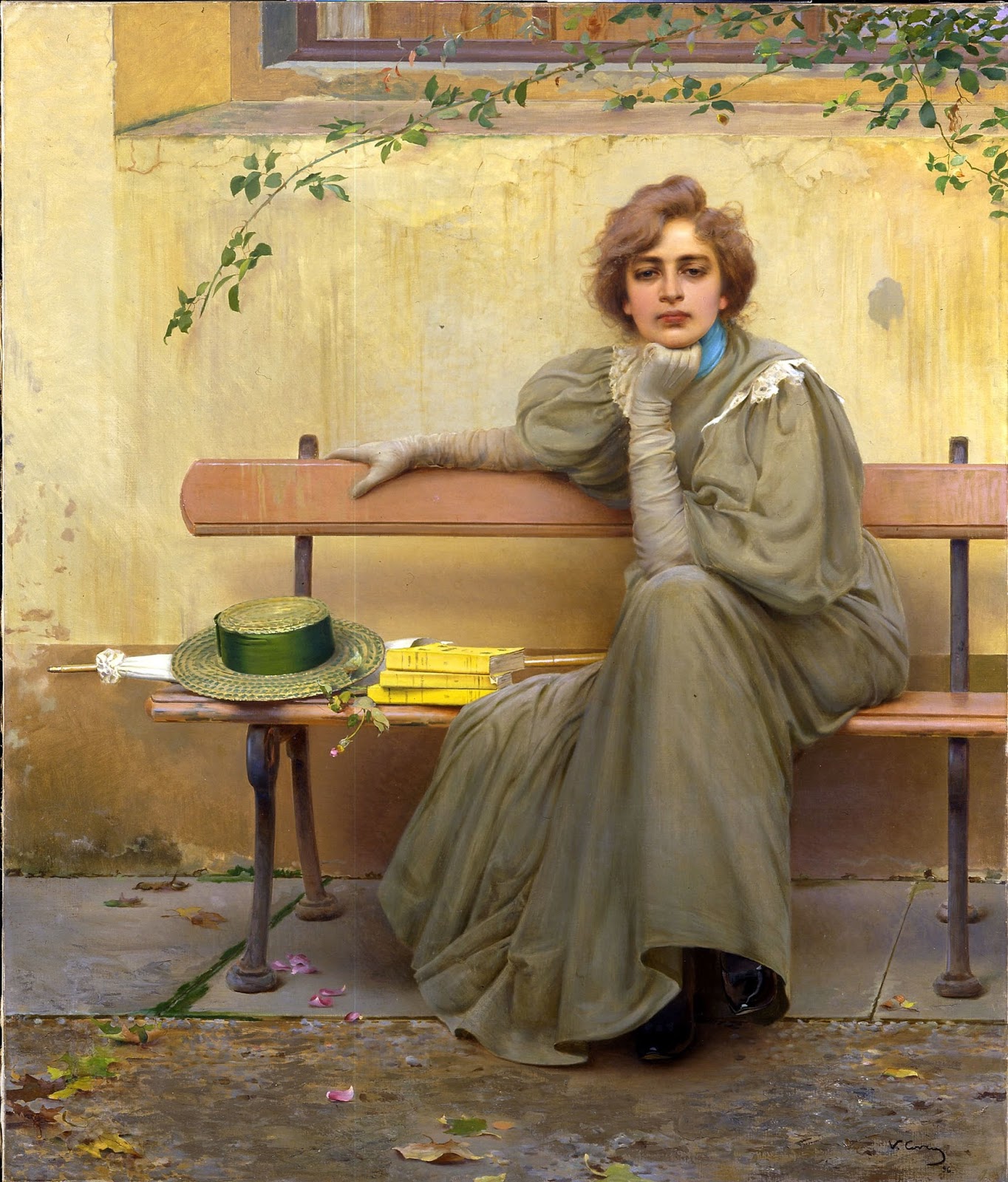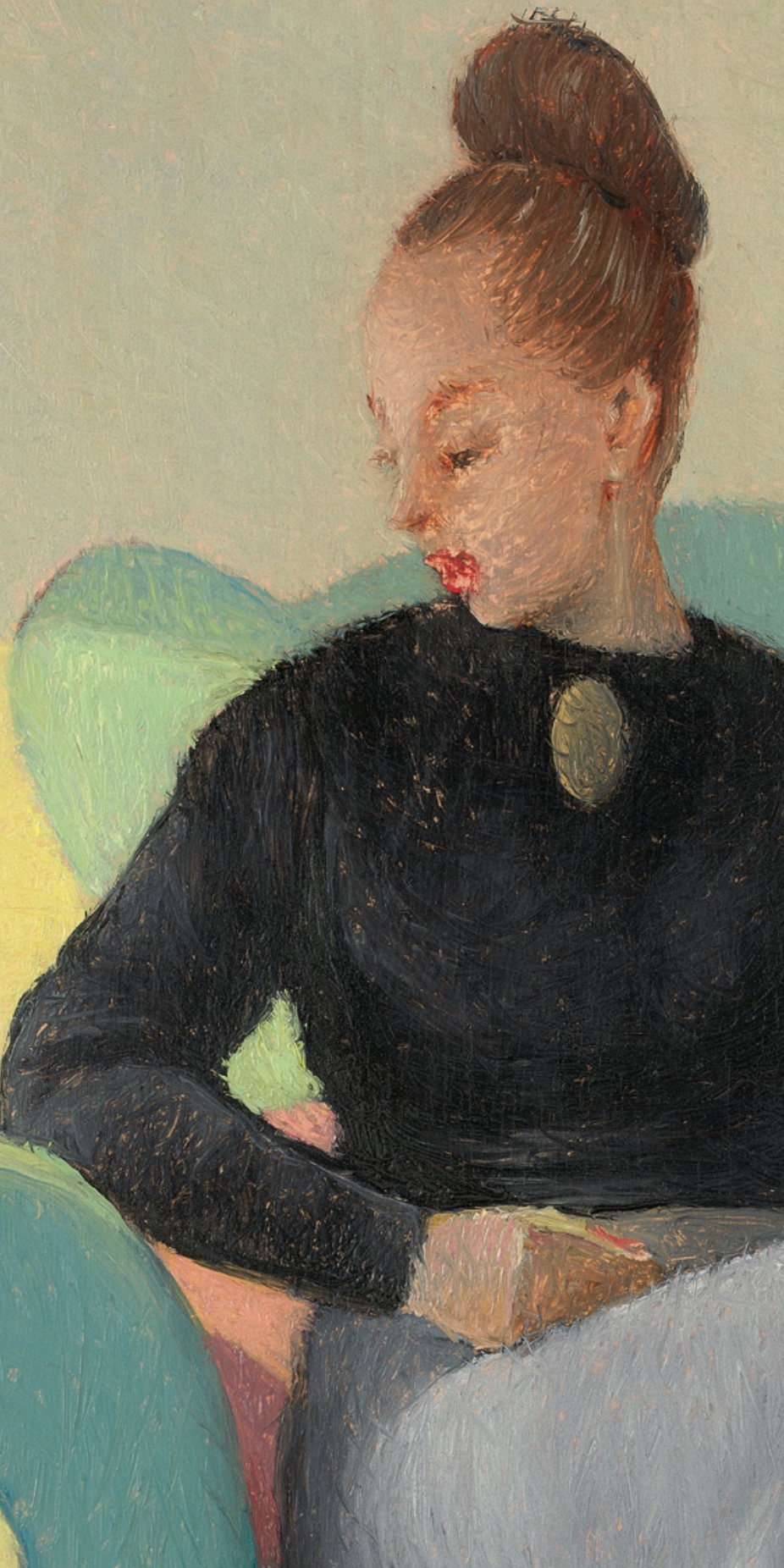Vittorio Matteo Corcos returned in 1886 to Florence, where he painted the prominent and the fashionable portrait of a modern girl, Elena Vecchi, which has become the most emblematic image of the so-called Belle Epoque.
His most notorious portrait, however, was that of his mistress, Elena Vecchi, the daughter of a naval officer who carned his fame as Jack La Bolina, the author of popular adventure stories.




.jpg)
